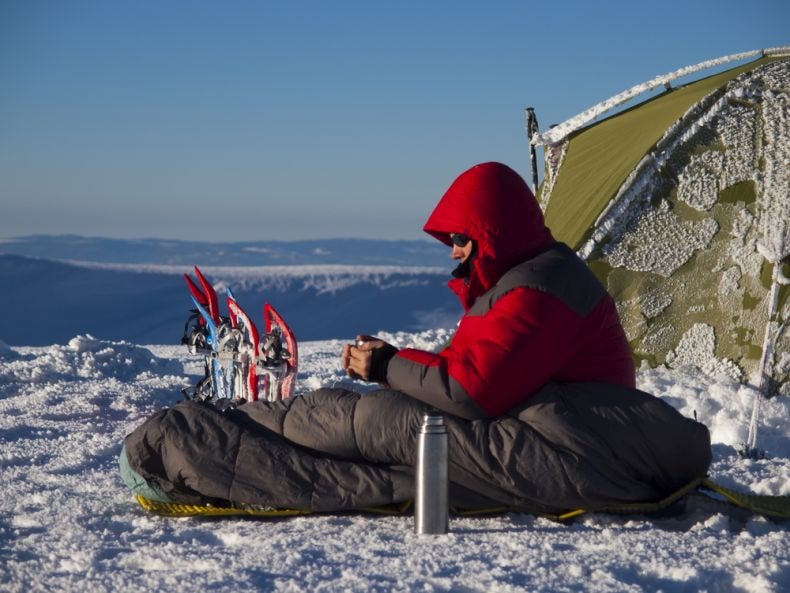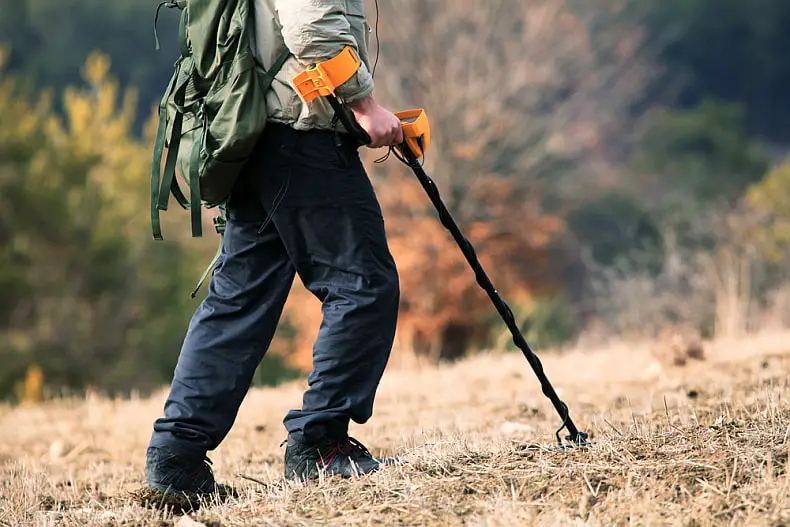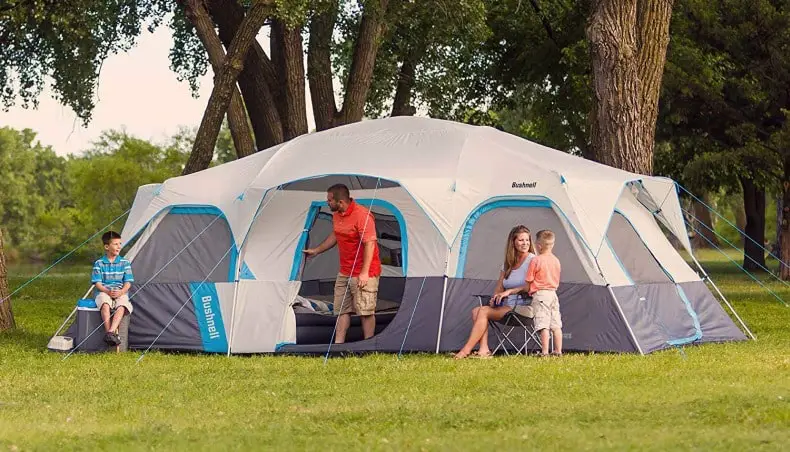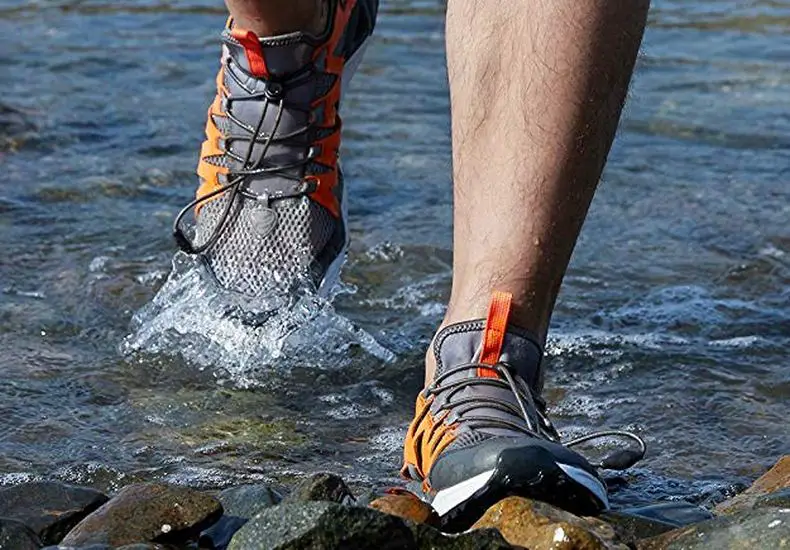It is very important to remember that sleeping bags are needed for multiple seasons when sleeping outdoors. One thing often ignored when looking into them is the sleeping bag GSM ratings. These are crucial, as they will help you determine several things about the bag.
First, it will help you understand the comfort level the sleeping bag provides. Of course, if you’re sleeping on the ground it is nice to know any comfort is possible.
Second, and likely the most important part of the GSM rating, is the amount of warmth it can provide.
At the end of the day, the GSM ratings are key to keep your eye on. While there could be a price difference based on the rating, it’s likely well worth the extra investment. Remember, there is a major value in having a proper GSM rating…meaning you’ll benefit heavily from paying a bit more. It can mean the difference in whether or not you get a good night’s sleep.
Let’s dive into more information about sleeping bag GSM ratings.
Table of Contents
What Are Sleeping Bag GSM Ratings Anyway?
A good question to ask random asker. GSM stands for “grams per square meter.” This is simply a measurement of the density the insulation or filling inside the bag will be. The higher the number your sleeping bag has, the higher your insulation density will be.
Higher density will be useful for those who are camping or sleeping outdoors on those cold nights due to the insulation providing higher warmth. It will be able to do this pretty much due to the human body and our personal body heat.
Insulation, in this case, will be holding warmth. Therefore, if you are producing body heat then your personal heat will technically heat the bag. This is common with ALL sleeping bags, of course. However, only certain ones can hold heat insulation well.
Those are commonly the ones that have higher sleeping bag GSM ratings. This will be most beneficial in colder environments. You want something that can hold any warmth, but the amount you’ll need will differ depending on the place you’re going to be sleeping.
How It All Works
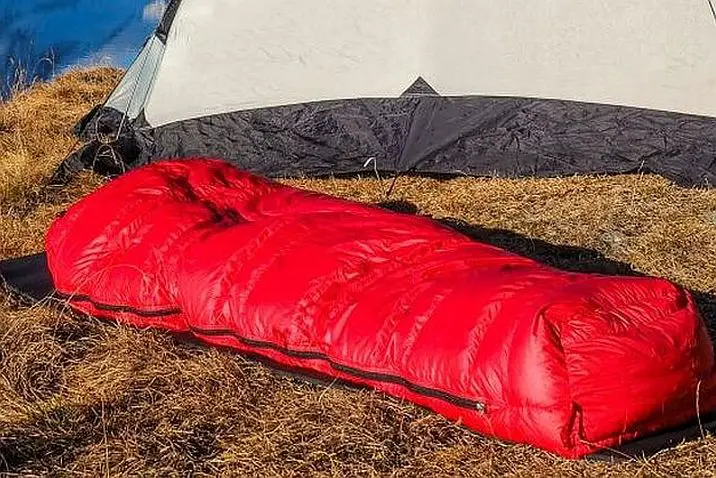
Sleeping bag GSM ratings are important to pay attention to for cases when you’re not sure about how long you’re going to be gone. This is due to the unpredictable nature of weather, but you can likely guesstimate based on the climate you’re going to be in.
As mentioned, GSM ratings are more important to look at when you’re going into colder environments. Since higher GSM ratings offer more insulation, those higher versions will hold heat the best. Meanwhile, lower ratings will not.
When we say this, we’re noting that GSM ratings are key to sort of link with temperature. In that, a GSM rating will hold heat up to a certain temperature and then fail to do so after a certain point. Of course, it does not matter “how” it is insulated either. This works the same regardless.
You might see different fabrics or fillings, even synthetic types. This only matters slightly and not truly enough to worry about here.
GSM Rating Types
You’ll actually see a lot of GSM ratings in the world of fabric. This will be used in not just sleeping bags but also pants, jackets, and even bath mats. The ratings will range wildly from around 67 to 950.
In normal terminology, these will be key for the thickness of fabric or insulation
This is why better towels often have a nice level of GSM. Meanwhile, your pants also need to have a good level too, as they’ll need to be worn in multiple environments.
The average for towels and pants is roughly 300 to 650GSM. Towels are on the higher end for obvious reasons while pants are slightly lower depending on the type of pants. For jeans, they’ll be kind of in the middle but for the outdoor pants, it’ll be on the higher end for them.
For sleeping bags, you’re going to see a wide range as well but this is, again, due to need. This could be kind of small, around 100GSM. Then some could go as high as the 900GSM or more even. It’s all about the design.
For example, if that particular sleeping bag is made for cold, snowy weather…it’ll obviously be higher up. Yet the type you might take to a friend’s sleepover will rarely need high GSM ratings, and thus be a lot smaller or less insulated.
Others, however, will be useful for many situations and usually be in the middle somewhere.
Best Sleeping Bag GSM Ratings For Certain Weather
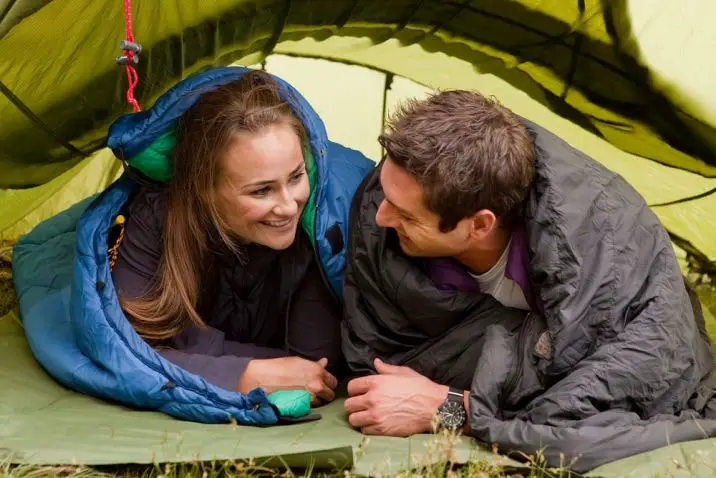
When choosing a sleeping bag, you might go to your favorite major retailer or even an outdoor company. As you do this, you’ll come across sleeping bags that are often overpriced or try to sell you on stuff you don’t need.
If you’re making the decision completely based on GSM ratings, then you could make a mistake. While we are harping on the importance of this, we are not saying the highest GSM is needed for everyone.
Again, it is a need-based concept here. Higher GSM ratings are great but keep in mind that sometimes it could be too much. The higher the rating, the thicker the bag will be. This means it’ll be much heavier.
If you’re going to camp on a mountain then by all means…take that higher GSM bag with you. Yet if you’re going backpacking in your local national park or major forest area, it is unlikely you’ll need something that big.
Just take one that best fits what you’re doing and where you’ll be.
The GSM ratings you need to consider will often be based on a temperature scale from the negative degree stage up to around 70 degrees. By the way, we’re using the Fahrenheit measurement when discussing this.
Here’s the best way to consider GSM ratings for your sleeping bag:
GSM | Temperature Range |
|---|---|
100GSM & Under | 32 Degrees & Up |
200GSM to 300GSM | 20 to 32 Degrees & Up |
400GSM & Up | 20 Degrees & Below |

